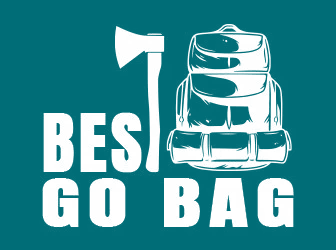When you hear there are contaminants in your drinking water, it’s concerning. When you hear there are “forever chemicals” in your drinking water, it’s downright scary.
Perfluoroalkyl and polyfluoroalkyl substances (PFAS) are also known as “forever chemicals.” That’s because they don’t break down in the environment or in our bodies. They’ve been linked to a wide variety of serious health conditions.
The CDC estimates that PFAS are in the blood of 97% of Americans. They’re resistant to water, heat, and grease. And they’re found in all sorts of products, including food packaging.
Not to mention creatures… everything from fish in the Delaware River to polar bears in the Arctic.
PFAS Are Everywhere
PFAS are also found in clothing, cosmetics, carpets, firefighting foam, and even toilet paper.
Elsie Sunderland is a professor of environmental chemistry at Harvard University. She said, “You see all these strange things depending on which PFAS you’re talking about and which organ system, but none of it’s good.”
These synthetic chemicals don’t degrade in the environment due to their very strong carbon-fluorine bond.
Because they’re used in so many industries – including automotive, construction, and electronics – PFAS leak into the soil, water, and air over time.
Making Progress… But Not Enough
The U.S. Geological Society released an extensive study revealing that PFAS contaminate nearly one-half of the nation’s drinking water.
More than 700 taps and kitchen faucets in homes, businesses, and schools were examined in this study. Researchers searched for 32 specific PFAS among a group of some 12,000.
Some headway is being made to control the amount of PFAS we’re exposed to. States including Minnesota and Maine are legally blocking the use of chemicals in certain products.
The 3M company agreed to pay a huge settlement for releasing forever chemicals into waterways. But while some chemicals have been removed from consumer products, they’re replaced by others that are yet unregulated.
‘It’s Not Going Away’
It’s clear there is no immediate solution to the problem of PFAS in our drinking water.
John Kmiec is the interim director of Tucson Water. He says, “We know it’s not going away. The thing that gives me the greatest concern is not every community or every water company in the U.S. is actively testing for PFAS.”
Which makes it imperative that we filter water coming out of our taps and water we drink from outdoor sources.
That way we can reduce the odds of consuming contaminated water. Just make sure your purification devices are effective against a variety of contaminants, including PFAS.
Storing Water – How Much & Where?
Once you’ve filtered your water, it’s time to store it properly. How much you store depends on factors such as the number of people in your family and your storage space.
You should have at least one gallon of drinking water per day per person. And another one-half gallon for sanitary purposes and handling other cleaning tasks.
Be sure to store water away from light and heat. A cool, dark space is best. Be mindful of the potential for containers to leak.
Due to the space it takes up and its weight, storing clean drinking water is not the ultimate, long-term solution to the water contamination problem. However, if you hunker down in your home during a crisis, it will pay to have as much clean drinking water stored as you can.
5 Water Storage Tips
I’m going to conclude with five water storage tips below. They could make the difference between life and death following a disaster.
- Store in food-grade barrels. Blue, polyethylene plastic storage barrels for large quantities of water are popular. They’ll also help differentiate your water from your fuel and won’t taint your water with toxins.
- Clean the containers. Before filling them with water, dilute one teaspoon of bleach in a gallon of water and wash the containers thoroughly, including insides, lips, and lids. Never store water in a container that’s been used to store something else.
- Keep them in a proper place. Make sure your water containers do not have access to sunlight, which can result in bacteria and algae growth. A cool, dark place away from chemicals is best. Only use containers with airtight lids.
- Secure the containers. Think in advance about which areas in your home would most likely be affected by a disaster and keep the containers out of there. Avoid high places and keep your water locked away if you think looting could be a possibility.
- Replace your supply regularly. Yes, it could last for a long time if stored properly, but replacing it at least once a year is a good idea.


